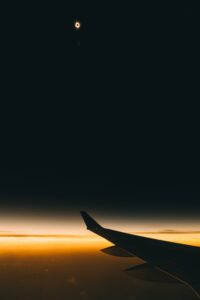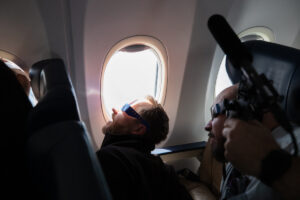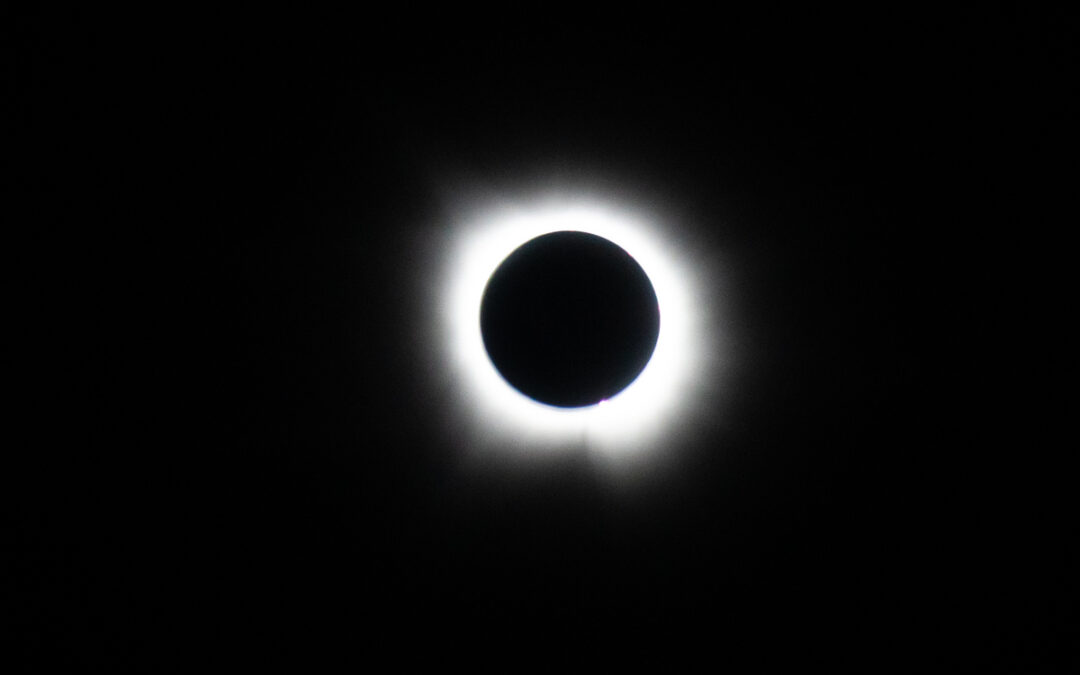As a total solar eclipse passed across North America on April 8 2024, beginning over the South Pacific Ocean and moving northwards through Mexico, the United States and Canada, daylight briefly turned to darkness for around four minutes in what many onlookers described as a ‘once-in-a-lifetime’ experience.
Alongside NASA’s estimate of 31.6 million people living along the ‘path of totality’ – where a hundred percent of the sun’s light is completely blocked out as the moon aligns directly in front of our closest star – many more eclipse-seekers travelled from far and wide to witness the event.
Ahead of the event, the Federal Aviation Administration (FAA) warned of the possibility of “a higher traffic volume than normal anticipated at airports along the path of the eclipse,” with private pilots also taking to the skies in light aircraft. Although no legislation prevented pilots of small aircraft operating under VFR (Visual Flight Rules) from being airborne during the approximately four minutes of darkness, the FAA noted that “pilots flying during the total eclipse are encouraged to use appropriate lighting to increase safety for all aircraft”.

Flightradar24
A passenger aboard a private helicopter flight during 2017’s eclipse explained that despite the temporary blackout, “you’ll still have a visual reference, including a very cool 360-degree ‘dawn’ on the horizon”. Flight tracking platform Flightradar24 estimated that in total, “more than double the number of regular general aviation flights took to the skies to fly to a better viewing area or watch the eclipse from the sky”.
However, for those seeking an airline’s-eye view of the eclipse, a number of airlines – including Delta, United and Southwest Airlines – offered opportunities to rise above the cloud that obscured the view for many on the ground. After initially commissioning one special service to offer passengers an unprecedented aerial view of the phenomenon, Delta subsequently added a second flight due to demand, with both aircraft performing a couple of mid-air manoeuvres: allowing those on both sides of the cabin to see the spectacle.

Delta Air Lines
“Multiple airlines have flights along the path of totality, but it looks like one will stay within the path the entire flight: Air Canada’s AC1070,” wrote Flightradar24 on social media. The Canadian national carrier had advertised four flights as passing through the eclipse’s path at lease once, joking: “We’ve got the best seats in the house!”
Southwest Airlines, meanwhile, hosted what the airline called a ‘Solarbration’, with three flights passing through the eclipse’s shadow offering eclipse-themed glasses, napkins, and ‘cosmic cocktails’. “The whole world was looking up today, and we were over the moon to leverage our place in the sky by extending an opportunity to observe this phenomenon close up on several Southwest flights in the path of totality,” explained a Southwest spokesperson.

Southwest Airlines
However, the crew aboard NASA’s three WB-57 research aircraft potentially had the best view of all whilst taking to the skies, with scientific instruments sent up to study the sun during the narrow window of opportunity. Flying much higher than any commercial flight, the research aircraft operated above most of the Earth’s atmosphere, capturing wavelengths and crisper images whilst extending the time spent in the moon’s shadow.
“There isn’t a lot of data at the Sun at some of the wavelengths we’ll be studying,” Amir Caspi, a team leader from the Southwest Research Institute told NASA ahead of the event. “We don’t know what we’ll find, so it’s extra exciting to be making these measurements”.

